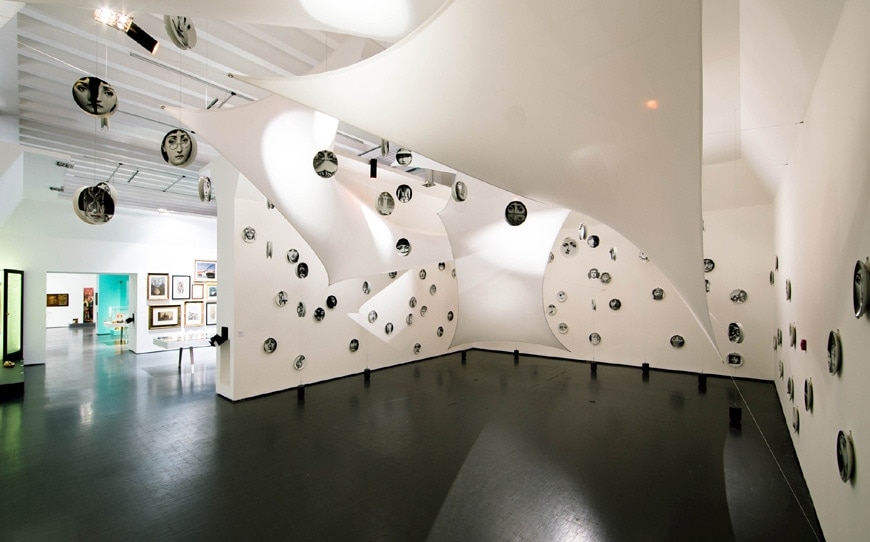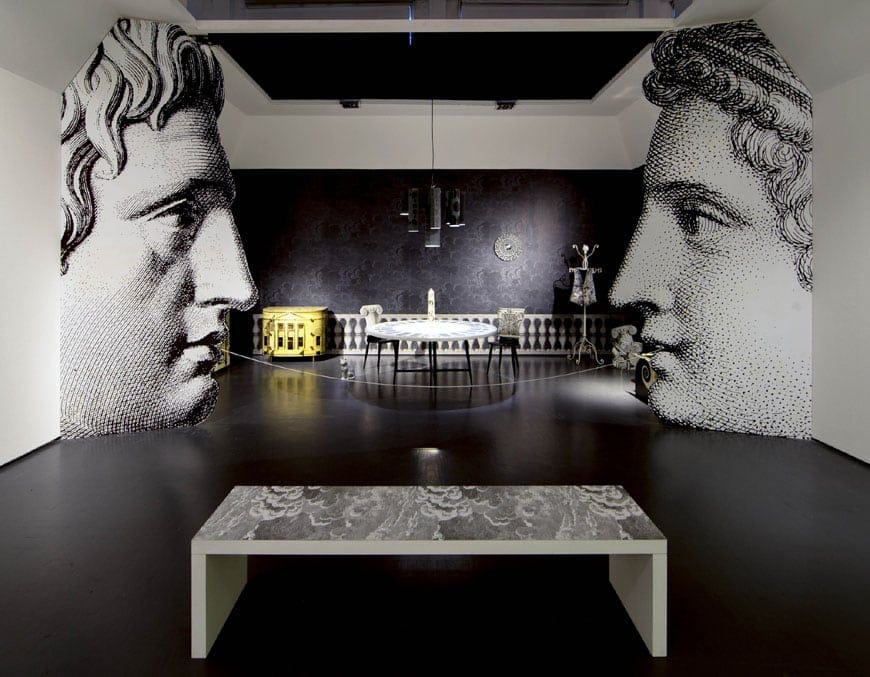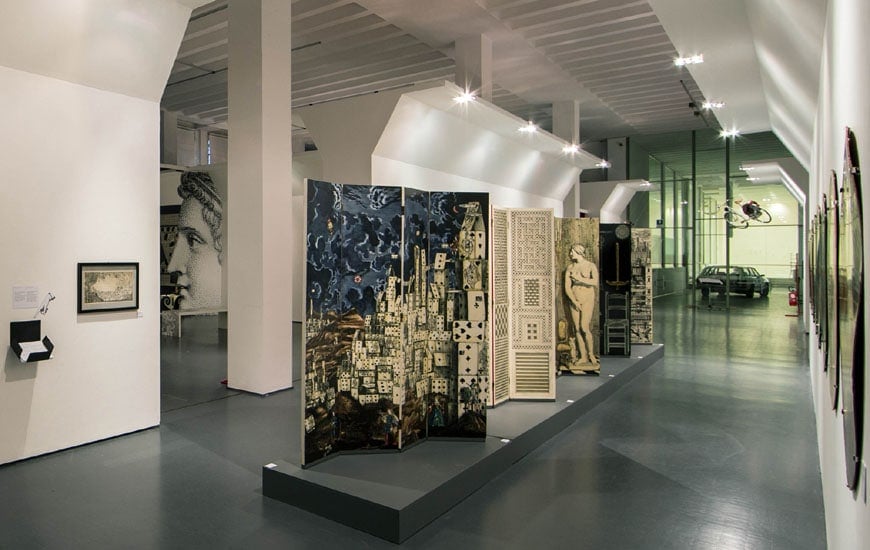Piero Fornasetti – One hundred years of practical madness
Triennale Design Museum
curated by Barnaba Fornasetti
exhibition layout concept :Barnaba Fornasetti
exhibition design: Giulio Albertazzi , Raffaele Arcone
graphic design: Nuclearlab
Fornasetti Archive: Corrado Guerreschi
Photos by Toni Meneguzzo
PIERO FORNASETTI – One hundred years of practical madness
Design report by Raffaele Arcone, English translation by Inexhibit
At the Triennale Design Museum, the great exhibition held for the centenary of the birth of Piero Fornasetti ended the 9 February 2014.
Over one thousand pieces, mostly coming from the archive curated by Piero’s son, Barnaba Fornasetti, were exposed.
The exhibition was arranged in sections, from the early paintings to the artist’s books, the collaboration with Gio Ponti in the 1950s /1960s, and the more troubled 1970s, when the ruling rationalist dogma of functionality in architecture and design confined Fornasetti to a marginal role, but still could not stifle his volcanic creativity until the artist died in 1988.
The most arduous challenge when designing this exhibition was how to find technical solutions capable of giving a rational and coherent order to the enormous number of objects on display, which were frequently small or even tiny, as well as how to provide such objects with an interpretation so that an ashtray could be placed side by side with a book by Pablo Neruda.
We opted for an almost “hand-crafted” approach to this design, developing custom solutions and hardly ever using products available in the market, by a constant and fruitful collaboration and confrontation with all workmen involved. Also for the materials we rejected the “high tech” temptation as well as to easily pursue a catchy appearance, we preferred instead to adopt simple, plain, traditional materials, to reveal the “artisanal” nature of the exhibition outfit.
After all, an exhibition on Pietro Fornasetti couldn’t be conceived differently, because, besides being a painter, engraver, designer, decorator, and stylist, he was also a refined craftsman. In his works, tradition and techniques perfectly join. He has never been prone to the trends of the moment, insofar as paying a high fee to his being heretical to the rationalist orthodoxy then so diffused.
Therefore, his personality inevitably influenced our design decisions. His modus operandi, inherited yet reworked by his son Barnaba, who also was the exhibition curator, necessarily guided the hand of us all.
Text and images courtesy of Raffaele Arcone – Milano / Italy
Photos by Toni Meneguzzo
copyright Inexhibit 2025 - ISSN: 2283-5474







